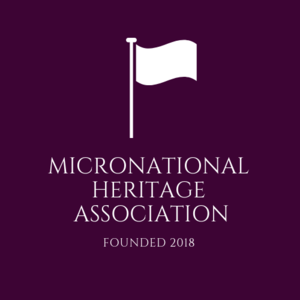Micronational Heritage Association
The Micronational Heritage Association is an intermicronational cultural organisation, tasked with classification and protection of micronational heritage sites and cultural works. The organisation focuses mostly on producing classification of micronational heritage and yearly reports on conservation of it.
History
The Micronational Heritage Association was founded on the 31st of December 2018, by Karl Friedrich.
After January 2020, the organisation became inactive and essentially defunct. Terry of Essexia was given ownership but didn't revive it, opting to give it to Jack D in June 2021.
In August 2022, as part of their manifesto commitments, the campaign to elect Jonathan Augustus and Newton von Uberquie to the executive of the Grand Unified Micronational during the August 2022 GUM executive election promised to absorb the MHA into a new Grand Unified Micronational Heritage Association Committee, or GUMHAC.
Membership
Membership is based on a purely voluntary basis, with member-states and non-members having no obligations to the organisation. Interested parties, both members and non-members, may submit sites or works for review and receive a classification provided by the Board of Assessors in return.
| State | Member | Assessor | Member since | Sites | Works |
|---|---|---|---|---|---|
| 31 December 2018 | 1 | ||||
| 1 January 2019 | |||||
| 13 January 2019 | |||||
| 10 June 2019 | 1 | ||||
| 17-IX-2020 | 1 | ||||
| 21 January 2020 | |||||
| 21 January 2020 | |||||
| United Sea Bass Islands |
Classification
Classification of submitted items is primarily divided into sites and works – sites are physical, natural or man-made immovable structures and areas of special importance to a micronation. Each submitted site should have at least some form of legal protection in the submitting micronation. The other primary classification is works, which includes cultural developments of a micronation, mobile structures or small items, documents of importance and other works. Each item may be awarded more than one classification.
List of sites
| Image | Name | Classification | Micronation | Description |
|---|---|---|---|---|
 |
Nek river | |||
 |
Fort Morris | |||
 |
Convento de Christo Tomar | The convent and castle complex is a historic and cultural monument and was listed as a UNESCO World Heritage site in 1983. | ||
| Río Alcalá | ||||
| Anurini Marathana |
